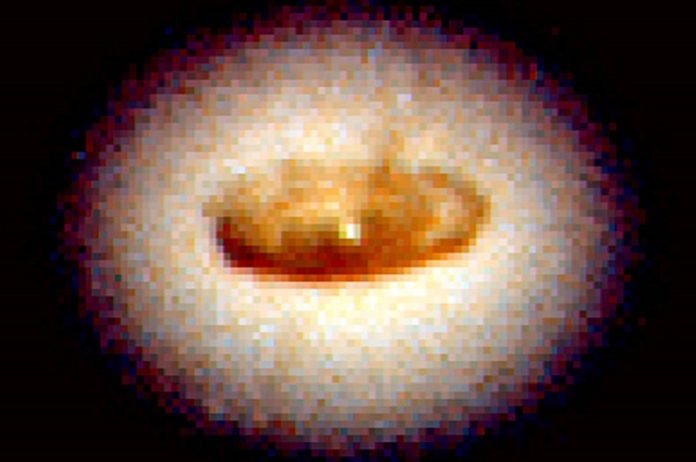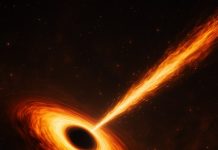
Ever wonder what’s going on at the heart of our galaxy?
Well, scientists are always trying to figure it out too.
Researchers in the Netherlands and the United Kingdom have found something surprising: the paths of 27 stars circling our Milky Way’s central black hole are really unpredictable.
In fact, they can’t be sure where those stars will be in just 462 years!
Studying stars and a black hole together is tricky. In the past, scientists couldn’t even accurately simulate the movement of more than two celestial objects like stars or planets.
But in 2018, some really smart people from Leiden University made a computer program that can. Now, this program can handle 27 stars close to a black hole.
When they ran the simulations, they found that while the stars stay in orbit around the black hole, their paths get messed up because of their interactions with each other.
Even a little change in one star’s path can set off a chain reaction affecting all the stars.
Simon Portegies Zwart, one of the researchers, says this is “astonishingly short” compared to our own solar system, where things are predictable for about 12 million years.
He says that the area near the black hole is 30,000 times more chaotic than our own neighborhood in space!
So how does this chaos happen? It usually starts when two or three stars get too close to each other. They push and pull, which makes them change their paths.
The black hole feels this change and also shifts a bit. This tiny shift is felt by all the stars, creating a sort of ripple effect. When you zoom in on the stars’ paths, you can see they change by a lot over time—up to 40 times the distance from Earth to the Sun!
The researchers compare this chaos to riding a bike through a city. You might know it takes about 15 minutes to get from point A to point B.
But if there’s a traffic jam or a sudden event, that time can change. It’s the same for these stars. Something unexpected happens, and it messes up all their paths.
They even made up a new term for this: “punctuated chaos.” It’s inspired by a term in biology where long periods of stability get disrupted by sudden changes.
Douglas Heggie, another researcher involved, says this isn’t a computer glitch or mistake. They tested their calculations thoroughly. So now, they’re confident about talking about the unpredictability of star systems around black holes.
So what’s the big deal? Zwart says that this research means astronomers need to think differently about what happens near black holes. Words haven’t even been invented yet to describe some of this new chaotic behavior they’re seeing.
This shows us that space is still a big mystery with plenty of surprises left. Even with all our tech and brainpower, there are things out there we can’t predict, adding to the excitement and challenge of understanding our universe.
The researchers have published the findings in two papers in the International Journal of Modern Physics D and in the Monthly Notices of the Royal Astronomical Society.
Follow us on Twitter for more articles about this topic.
Source: Netherlands Research School for Astronomy.



